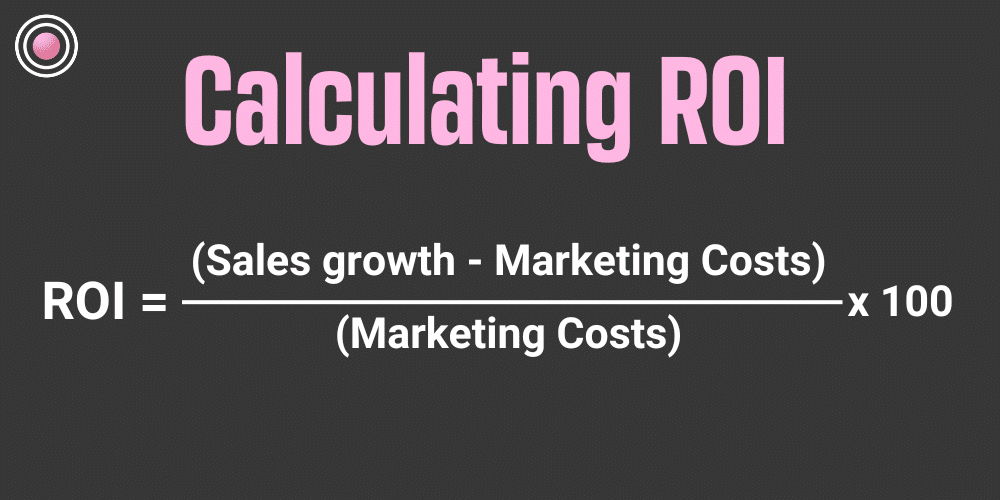
-
Joshua Lee
- 6 Min Read
- Blog, Search Engine Marketing, SEO
Maximising ROI with Search Engine Marketing Analysis
Learning to master search engine marketing analysis can lead to seamless and simple improvements in your digital marketing ROI.
Effective analysis of your paid and organic search efforts could be the key to your prolonged online success; keep reading, and you’ll find out how.
The Importance of Search Engine Marketing Analysis
Much like any digital marketing channel, performance analysis is essential; without it, you won’t truly know as you get out of it. Reflecting, and sometimes over-reflecting, is basic human nature, so why would you not reflect on your search engine marketing channels?
We understand that most might not have the tools or know-how to start analysing their SEM efforts, which makes sense; search engine marketing analysis has a large first hurdle, but one of the easiest ways to understand its importance is by looking at your ROI.
If your ROI is pants, then chances are you’ve not been analysing your search engine marketing efforts. Any digital marketing channel must optimise and adapt to suit new trends, technologies and market change.
You can see now how ROI and SEM analysis are perfect for each other. Whichever channels you are running, their performance is dependent on both.
What’s ROI?
ROI is short for return on investment; it’s a performance-based metric created specifically to evaluate the performance, effectiveness and profitability of an investment.
When used in digital marketing, it is more accurately defined as the return on investment that your marketing efforts quantify. It is most commonly used as a way to measure how successfully marketing channels, programs or campaigns were at generating revenue.
So, simply put, ROI measures the money you put into your digital marketing efforts against the revenue you have generated and gained. This metric is approximate and can be quite tricky to master, but when used correctly can be a powerful tool in determining which channels work best for your business.
Understanding Search Engine Marketing
Search engine marketing, often shortened to SEM, is a digital marketing practice that increases visibility in search engines to advertise and promote your business.
This is achieved through two channels: paid and organic search. The most common form of SEM is paid search, where you pay to have your listing on search engine results pages for a limited time. The most common form of paid search is PPC advertising.
This leaves us with organic search, more of a slow burn; improving visibility organically is a much more involved process. This is often called the ‘free’ version of SEM, as you don’t pay for an organic listing. However, you need to spend considerable resources and time improving organic visibility. Search engine optimisation is the practice used all across the world to improve organic search.
One of the main differences between organic and paid search is that organic more commonly targets your audience at the top of the sales funnel, whereas paid targets your customers closer to the bottom.
Organic and paid search are essential components of maximising your online efforts; using them in tandem can be a cost-effective way to target your audience at all sales funnel stages. Generating an evergreen sales funnel that drives business growth for you.
Yes the benefits of SEM are undeniable, but in order for them to run as efficiently as possible and generate those high-quality results for your business, you’ll need a specialist SEM agency.
To understand why you should be talking to a search engine marketing agency right now, check out our ‘Why Hire a SEM agency’ ultimate guide.
ROI in SEM
The associated complexity should be evident to you now you know what SEM and ROI are and the techniques and processes involved to be even remotely visible, let alone successful.
With this, the need for effective ROI analysis and calculation is key. It’s one of the fundamental metrics for assessing campaign performance.
In the context of digital marketing, calculating ROI is much the same as with your other revenue-driving channels. Here’s the simplest formula for calculating return on investment:
ROI = (Sales Growth – Marketing Costs) / (Marketing Costs) × 100.
For example, if a sporting goods company runs an SEM campaign for a new range of ski wear and their sales grow by £1,000, and the marketing campaign only costs you £500, your ROI would be 100%.
This is great, so that same ski wear campaign is run again, this time with a bigger budget paid search budget, increasing their costs to £2,000, but your sales only grow by £1,500; the ROI for the second campaign would be -25%.
This is a very simple metric and doesn’t quite consider the various complexities of SEM campaigns, but it gives a good approximation of your return on investment.
If you’re looking for a search engine marketing agency to do the work for you, read our blog of top tips for finding the best search engine marketing agency for your business.
Why and How to Use Analysis for ROI Maximisation
In our examples above, you can see that while the winter clothing campaign netted a 100% ROI the first time around, the second had a negative ROI of -25%.
While it’s completely fictional, it’s an example of why you should use search engine marketing analysis to maximise your ROI.
If the marketing team had analysed the first campaign, they would’ve seen that while they increased their paid search budget, organic search was the channel that gained the most sales. So, they’ve spent more money on prioritising the wrong SEM channel.
Without a thorough analysis of the performance of your SEM channels, it becomes a guessing game for the next campaign. No learnings are gained, and you’re flying blind for the next campaign.
Of course, this is just a very simple example of why search engine marketing analytics is vital, but how can you use it? Let’s cover some basic methods, metrics and techniques that you could implement in your SEM campaign review and analysis easily and effectively.
Metrics
There is a wide range of metrics that you can use to analyse the performance of your campaigns, but in our experience, you should focus on these 5 key metrics:
- Click-Through Rate (CTR)
- Conversion Rate
- Cost-Per-Click (CPC)
- Cost Per Acquisition (CPA)
- Traffic Acquisition
Data Collection and Tracking
Accurate data collection for your SEM campaigns and measuring all of your online activity is crucial. Check out our post on quality website traffic to understand how to identify quality traffic and the best ways to measure it accurately.
One takeaway from this would be to pay close attention to your acquisition channels in your website traffic tool of choice.
Segment and Target
Using all of the data available to you, review your search engine marketing results and start to segment the users based on their behaviour, location, and demographics and use this data more accurately to target them.
Keyword Performance
For goodness sake, review your keywords, see which keywords have the highest CTR, check their search intent, and cross-analyse what works in your paid and organic search efforts. Find those competitive keywords and out-bid and out-optimise your competitors.
Properly master your keyword marketing strategy with our previous post.
Ad Copy and Content Analysis:
You should review your ad groups and their copy and the copy from your landing pages to help both paid and organic work hand in hand. Add the ad copy with the highest conversion rate to your website content. Alternatively, take your strongest performing web pages and use their content in paid search ads.
Budgets and Bidding Strategies
Much like the example, changing budgets should be based on actual data if one channel is stronger than the other, adjust your budgets accordingly. Do you need to spend more on paid to boost your performance, and you’re not getting much from organic? Then, be smart about your budget accordingly.
In a similar light, changing your bidding strategies can lead to significant benefits; this is exclusively for a paid search campaign. However, if you review your performance data, you can reduce your CPC, maximise conversions and ROI by allocating your bidding strategy effectively.
Conversion optimisation
Don’t waste your conversions on video plays, specific page visits or downloads. Review which conversions really lead to revenue generation and drop the rest. Paid search platforms like Google Ads will learn from your conversions and prioritise users that are more likely to carry out those valuable actions.
We hope you found this post insightful and enough to get you started on your journey to maximising your ROI with search engine marketing analysis!
If you’re interested in exploring what an integrated SEM campaign could look like for your business, then contact ROAR and maximise your ROI with our specialist SEO management and PPC management services.
We look forward to hearing from you.





